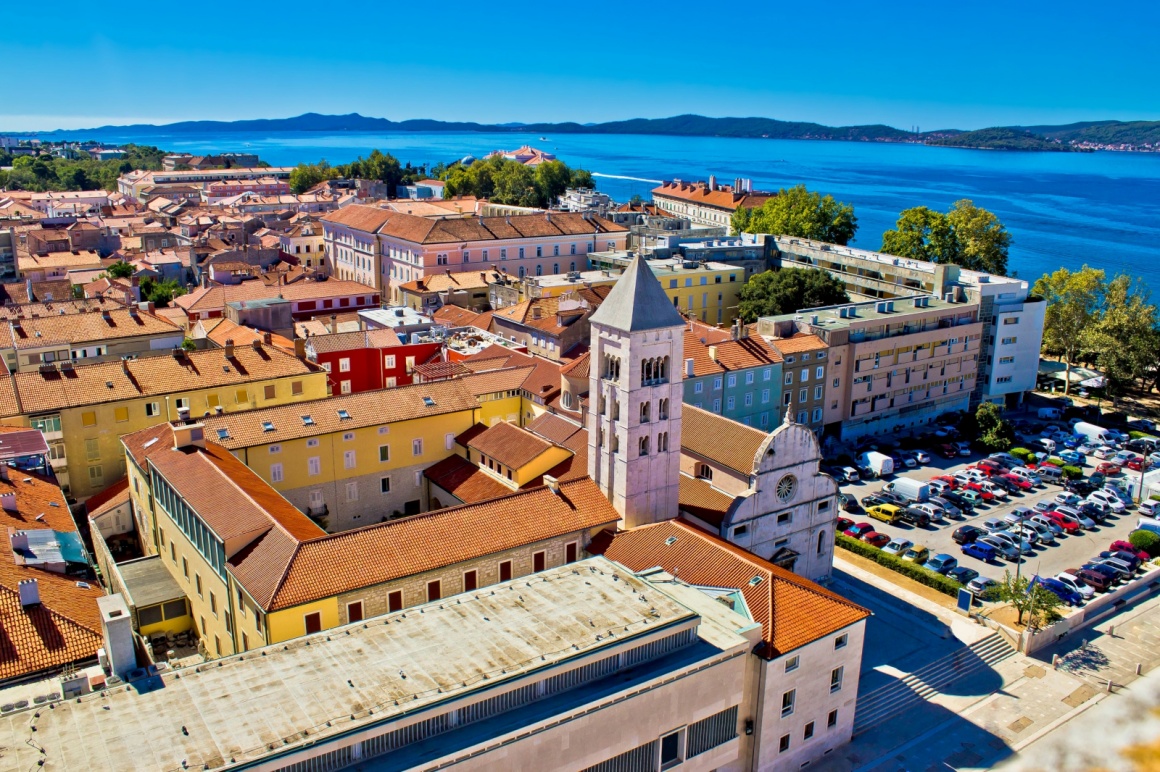Zadar is an ancient city, built in the very center of the Adriatic coast and rich with cultural and historical heritage. During its 3000 years long and dynamic history, Zadar has been devastated and pillaged many times, but just like the mythical Phoenix, every time it rose from the ruins even more beautiful and stronger than before. Today’s Zadar is a well preserved monument of various historical periods and cultures that helped forming its fascinating urban features.
Wider Zadar area has been inhabited since the early prehistoric times; various archaeological findings confirm the existence of life as early as Paleolithic. Illyrian tribes Liburnians inhabited today’s Zadar in the 7th century before Christ. During the 2nd century BC the Romans made Zadar their municipion and later a colony. During the Roman rule, Zadar began to resemble a true urban core with its network of roads, the main square, Forum and a temple. The remains of those monuments are preserved until the present day.
During the early medieval period, regular barbaric invasions caused the city of Zadar to stagnate. In the 7th century Zadar became the capital of the Byzantine region Dalmatia. It is the time when the new religion, Christianity, slowly spreads in the Zadar area, impacting the architecture and arts. It is the time when the first bigger church was built; the Holy Trinity church is today familiar as the Church of St. Donatus and is the most recognizable symbol of the city.
In the 10th century Croatians started to inhabit the Zadar area. Several Romanesque churches from that period are preserved until the present day (St. Mary’s, St. Grisogone’s and the cathedral of St. Anastasia). Although the late medieval period was turbulent with sieges and devastation, it is considered a golden era of Zadar. The city established itself as one of the most important merchant centers of the Adriatic coast. The influences of prosperity are best seen in the architecture; Zadar is the first city in Dalmatia to build gothic churches: St. Francis and St. Dominic. In renaissance Zadar came under the Venetian rule and remain that way until the end of the 18th century. In this period Turkish invasions transformed city into the powerful citadel and drastically changed its appearance. Despite of regular sieges and battles, the culture blossoms; first Croatian language writers (Petar Zoranic, Sime Budinic, Brne Karnarutic) were active during the 16th and 17th century.
The beginning of the 19th century was characterized by the exchange of Austrian and French rule with numerous social reforms and new institutions: the Zadar University, first Croatian language newspapers, the national museum. In the second half of the century Zadar evolves into a modern European city.
After the World War One Zadar came under the Italian rule and remained that way until the middle of the 20th century when Yugoslavia was formed. From that moment it was considered a part of Croatia, sharing its destiny until the present day. Zadar suffered significant devastation during the World War Two and again in the Croatian War for Independence when numerous historical monuments were destroyed. Today Zadar is rebuilt and is more beautiful than ever, establishing itself as one of the most popular tourist destinations in Croatia and Europe.






 'Zadar rooftops aerial city view, Dalmatia, Croatia' xbrchx / Shutterstock
'Zadar rooftops aerial city view, Dalmatia, Croatia' xbrchx / Shutterstock